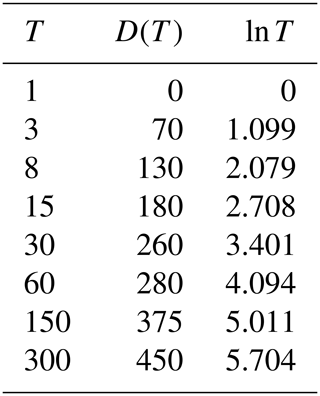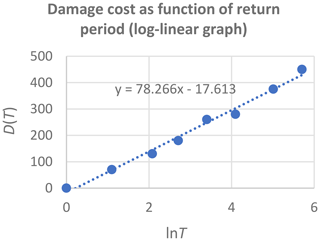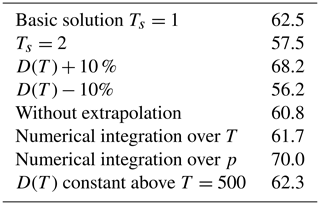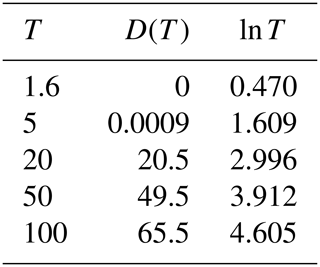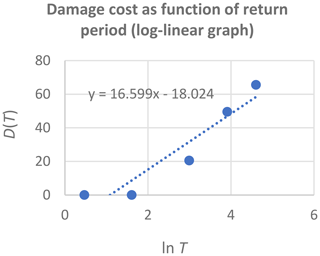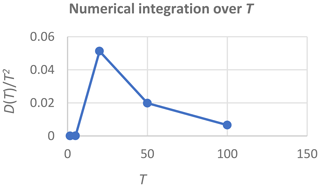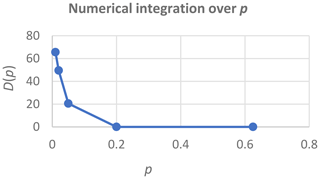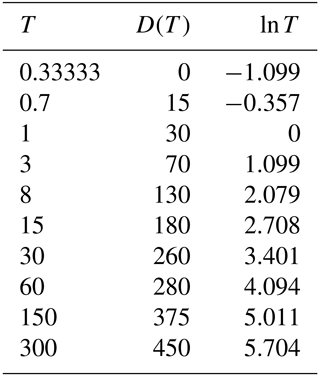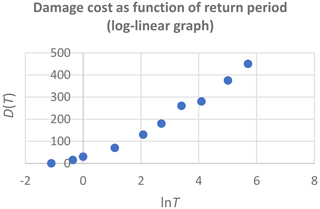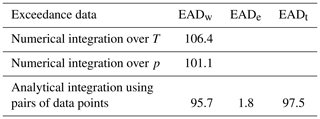Estimation of expected annual damage, EAD
The sensitivity of expected annual damage, EAD, is analytically analysed by applying a log-linear relation between return periods and corresponding damages. It is found that the smallest return period for damage should be estimated as precisely as possible, that the percentage uncertainty in the damage estimate is transformed into the same percentage uncertainty in the EAD estimate, and that it is possible to extrapolate beyond the largest return period with corresponding damage assessment. The precision of the estimate of EAD is investigated in detail in the case of only few available data, and it is found that two different methods for numerical integration may result in strongly diverging results. By applying a piecewise log-linear damage function, it is shown that the log-linear model provides a trustworthy estimate of EAD, also in the case of few available data. Finally, the modifications needed in the special case of threshold exceedance data instead of annual maxima data are presented.






